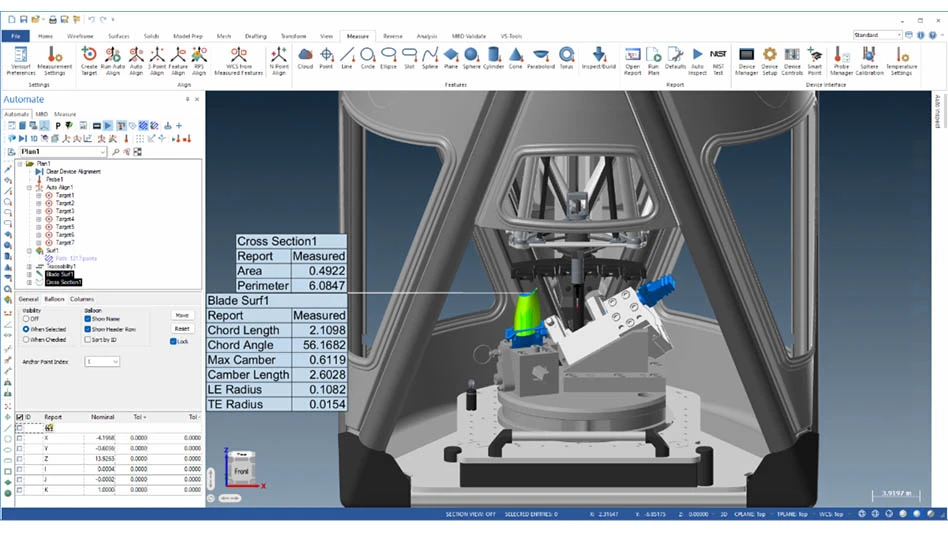 U.S. manufacturing company installed a recycling system about 20 years ago, proving that the right coolant makes a big difference when it comes to recycling metalworking fluids.
U.S. manufacturing company installed a recycling system about 20 years ago, proving that the right coolant makes a big difference when it comes to recycling metalworking fluids.
One of the key engineers responsible for the recycling system and metalworking fluids at the plant says the recycling system eliminated offensive smells in the shop, and cases of dermatitis virtually disappeared. Increased productivity lowered costs. Since then, the company has recycled millions of gallons of fluid, dramatically reduced carry-out, and coolant and tooling costs declined.
Despite these gains, the plant’s engineer says, “I felt we could do a whole lot better. We recycled a lot of different water-based coolants over the last 20 years, and some of it was frankly pretty lousy stuff. The problem was basically a solubility issue. We would get a heavy cream layer buildup, which would create additional carry-out with the tramp oil. The cream is not recyclable. We had to design special filtration systems with skimmers to remove the tramp oil.”
He adds that the computer system added up to lots of headaches for the recycling operators, and the inconsistent solubility was affecting production in the shop. “We were using excessive amounts of coolant, because some of the concentrate was not going in.”
He set out on a mission to find a better coolant, gathering samples from major suppliers and testing them. He included QualiChem’s XTREME CUT 290, a water-soluble semi-synthetic fluid, in his testing program.
“I get a lab beaker and mix the concentrate at 9%. Then I shake it thoroughly, really beat it in, and leave it on my desk overnight,” he says. “With most of the fluids I tested, they were still milky with discernible layers and a thin layer where the emulsifiers gathered at the surface when I inspected them the next morning.”
The QualiChem coolant was different he adds. “There was nothing, no cream layer at all. So I shook it again, noting that the foam settled out in less than seven seconds, an important consideration for us. I added the same amount of tramp oil to the 9% solution and agitated it thoroughly. When I came back the next morning, I couldn’t believe my eyes.
“The tramp oil was on top, so clear I could see through it. It looked like someone had poured the tramp oil carefully on top of the fluid. There were no layers – pure white all the way up to the waterline. So I did it again, this time using a paint mixer, with the same results. The solubility of this product was unbelievable. Its stability was rock solid.”
Making the switch
It took two years for the QualiChem product to be tested and approved for use in the plant, including lab tests and water quality tests. The next step was to test its lubricity in a vertical machining center on the shop floor.
Employees drilled holes in a solid aluminum block and measured them with a bore gauge. The shop had been achieving about 0.0004" to 0.001" oversize with the fluid it had been using.
“We then switched the fluid to the QualiChem XTREME CUT 290 and drilled 30 holes. There was not 0.0001" difference among all of them, and the holes were just 0.0002" maximum oversize. I didn’t even need to ream the holes,” he adds.
The QualiChem fluid’s solubility, lubricity, and tramp oil rejection led to longer tool life, and operators loved it.
“We took the coolant to a machine where we had been running titanium at 15% to 18% concentrations. When we ran the QualiChem at 9%, we immediately doubled tool life, and the finish looked like someone had ground the parts,” he says.
 The company switched to the QualiChem fluids, gradually, adding the new fluid right on top of the old.
The company switched to the QualiChem fluids, gradually, adding the new fluid right on top of the old.
“We had no problems. In fact we could immediately see a difference in the coolant performance. It tightened everything up. The cream layer emulsified with the tramp oil and popped to the top so we could skim it off,” he says.
Now, four years since switching to the QualiChem XTREME CUT 290, the plant’s engineer is happy with the results.
“In more than 30 years, I have never seen a water-based coolant with this solubility,” he says. “I’ll give you an example,” he said. “On our limited production floor, one of the machines sat idle for a whole month while its operator was out. When he turned the machine back on, the fluid looked the same as it did the day he left.”
Consistent tool life
The company’s tooling costs have gone down by at least 30% since changing coolants. “Operators were pulling their tools too often because they didn’t have confidence in the coolant.”
The engineer notes that the greatest fear for an operator machining expensive parts is a scrapped piece. “We have a job shop here. We’re not doing huge production runs where each piece might be a nickel or a dime. If we have to scrap a $250,000 part, it attracts a crowd very quickly.”
On one machine running Inconel, machining a shallow rotor with 30 vanes with extremely tight tolerances, operators were stopping to change tools about one-third of the way around on one part. Since switching to QualiChem, operators are now running three parts without changing tools.
“If they run the wheel right with this coolant we might do 42 pieces on a valve without dressing the wheel,” the engineer says. “Before, they would dress the wheel constantly, even though it was still sharp. That’s because the wheel wears as it grinds, and the parts start to grow, and when it reached the max they would redress the wheel. I showed them that they could simply put an offset in there and keep running on one dress.”
The engineer says he sometimes uses ceramic wheels, which have many facets to them and are expensive to dress because of the high cost of ceramic abrasives. He says the product also filters very well. “When you open up the filter bags you don’t have any cream inside. It drains faster, and filter bags last longer.”
Operators area not using filter bags as rapidly because the emulsion is tight. They are also happier with the cleanliness of the machines and finished parts.
Cleaner shop
“Before, we always had a sludgy ring around the top from tramp oil, grit, and other stuff. Now if we drain a tank it looks as if someone had just cleaned it,” the engineer explains.
“The QualiChem coolant fits seamlessly into our recycling program, and eliminates a lot of the problems we were having. We pull coolant out for recycling every 30 to 45 days, sometimes a little more when we get backed up, but never beyond 60 days. We have had no issues at all running it through the recycler.
“Now we’re running consistent concentrations through the recycler. It comes out of the recycling tank at 9%, and it comes back to us at 9%. Before, we would send it out at 9%, and it might come back at 5%, 12%, or 20% – all over the place. Our recycling operators don’t have to babysit the system as much,” he notes.
XTREME CUT 290 contains no dicyclohexylamine (DCHA) or other toxic chemicals, so shops can dispose of waste from the QualiChem product recycling into a non-hazardous drum, a cost savings compared to getting rid of hazardous waste.
QualiChem
www.qualichem.com

Explore the June 2015 Issue
Check out more from this issue and find your next story to read.
Latest from Aerospace Manufacturing and Design
- Simplify your shop floor operations while ensuring quality parts
- Happy Independence Day - July 4th
- Bombardier receives firm order for 50 Challenger, Global jets
- Automatic miter bandsaw
- SAS orders 45 Embraer E2 jets with options for 10 more
- Height measuring instrument
- Shopfloor Connectivity Roundtable with Renishaw & SMW Autoblok
- Moog expands space actuation, avionics manufacturing





